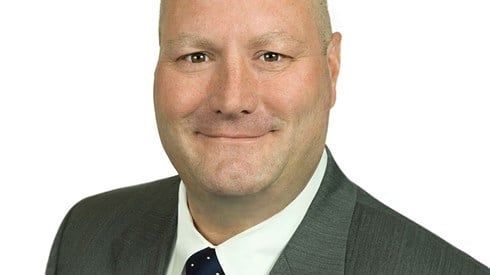The Evolution of Captives

AXA XL | July 10, 2023

Editor's Note: AXA XL contributes this Thought Leadership article examining the evolution of captives.
The information contained herein is intended for informational purposes only. Insurance coverage in any particular case will depend on the type of policy in effect; the terms, conditions, and exclusions in any such policy; and the facts of each unique situation. No representation is made that any specific insurance coverage would apply in the circumstances outlined herein. Please refer to the individual policy forms for specific coverage details.
AXA XL is a division of AXA Group providing products and services through three business groups: AXA XL Insurance, AXA XL Reinsurance, and AXA XL Risk Consulting. In the United States, the AXA XL insurance companies are Catlin Insurance Company, Inc.; Greenwich Insurance Company; Indian Harbor Insurance Company; XL Insurance America, Inc.; XL Specialty Insurance Company; and T.H.E. Insurance Company. Not all of the insurers do business in all jurisdictions nor is coverage available in all jurisdictions. Information is accurate as of June 2023. AXA, the AXA, and XL logos are trademarks of AXA SA or its affiliates. © 2023
Captives have increasingly become rooted into the DNA of businesses around the world. They have evolved from a risk financing alternative solely for the largest corporations looking to self-insure where the traditional insurance market was insufficient to an option for companies of all types and sizes. Captives now commonly provide insurance solutions for just about every type of risk, not necessarily as an alternative to traditional insurance but rather in concert, and in partnership, with the traditional insurance markets.
The Purpose of a Captive
Captives are insurance companies developed, owned, and controlled by their insureds. They allow businesses to take on more of their own risk and therefore give them more "skin in the game," as opposed to transferring risk to a third party. As a result, the formation of a captive encourages companies to create a culture and awareness around loss control and risk management and gives them the potential to profit from their own underwriting and loss experience.
"This is a much more formalized way of financing potential risk," said Steve Bauman, global programs and captives regional director—North America at AXA XL. If a company were to self-insure by taking a higher deductible, for example, they would take the loss on their books that year. "This [captives] was accelerating premium payments into your own insurance entity as a higher business expense, so you can fund all these potential losses up front in year one rather than wait for them to happen," said Mr. Bauman.
For some businesses, having this type of control over their insurance is appealing. Instead of simply writing a check to an insurance company, they are involved in the pricing and delivery.
The Traditional Captive Model
Captives were once viewed as a risk financing alternative for only the largest corporations. This was largely because establishing a new corporate entity into an existing corporate structure was an undertaking that required resources unavailable to the vast majority of companies.
Many of the early captive formations, for example, were offshore in Bermuda and in the Cayman Islands due to their favorable captive laws and tax advantages for doing it offshore at the time. Additionally, captive formation required a substantial sum of up-front capital.
"It was going by laws that were not very familiar in the United States," said Mr. Bauman. "There were likely costly trips to Bermuda or the Cayman Islands that were needed to get the entity up and running, and initial capitalization costs money."
According to Mr. Bauman, "One of the misconceptions is that once you go into a captive you immediately start to save money. You actually don't because there are start-up costs to captive utilization. These numbers have come down significantly in recent years, but there was definitely a cost barrier to entry in the early years, which lent itself to bigger corporations doing it," he said.
Captives traditionally provided monoline coverage, or at most coverage for just a few lines of business where it was not readily available in the traditional insurance market. They also typically were only considered for casualty and first-party high-hazard property risks.
Captive utilization has evolved over the years, however. Now it is not uncommon for a company to insure 20 or more lines of business through its captive. Changing regulations and the development of new captive vehicles have created opportunities for companies of all types and sizes. They cover just about any type of risk, including emerging risks.
The Captive Evolution
The expansion of domiciles, particularly in the United States, has been one of the significant drivers of captive utilization. Over the last half-century, captive domiciles have grown from just a handful of states and territories to the majority now having captive-related legislation.
"Success [of captives] brought that expansion to fruition because more states wanted in on the concept," said Mr. Bauman. "It's great for the indigenous-headquartered companies to have a captive in their state. It is an industry that provides the state with quality jobs."
Captive utilization has also grown due to the development of different captive vehicles. Traditionally, captives were single parent, where the captive insures the risks of only one company. Group captives were later introduced, and it became possible for multiple companies to come together and own and operate a captive insurance company. This opened the door to captive utilization to many more businesses.
Mr. Bauman continued: "And then around the year 2000 or so, there was the creation of the cell captive. Whether you call it protected cell, or segregated cell, it goes by different names. That gave even smaller companies the opportunity to use a captive-like vehicle. That event trickled the concept down to many more companies," he said.
In addition to the increase in domiciles, and the opportunity for businesses of all types and sizes to participate, captives have evolved to a point where businesses can now purchase the majority of their coverages through them, including coverage for emerging risks. For example, according to Mr. Bauman, there is a growing take-up within captives around cyber, but he also made it clear that insuring emerging risks in captives is not necessarily a new phenomenon.
"If you think about high-hazard property and some of the big corporations that were putting their property programs into captives in the early days, property risk was emerging," said Mr. Bauman. "Bigger facilities were being built, there were unknown risks."
Captive Considerations
Companies have a lot to consider when deciding whether or not to participate in a captive. It is important they have the desire and a true confidence in their company's risk profile, and they have clear understanding they will be assuming higher levels of risk.
"It's a big commitment for a company. They are taking it upon themselves to assume more of their own risk. That is how you make money in a captive, you assume more of your own risk and hope all the loss control efforts you do are successful," said Mr. Bauman.
The reality is, moving to a captive from the traditional insurance marketplace is not always a smooth transition. For this reason, a conservative approach of building success with partnerships and quality fronting and reinsurance companies is recommended.
"Things do go wrong, no doubt. I've been involved in a lot of programs where captives are implemented and then all of the sudden it is a terrible year for losses. That happens and you have to be aware of it," said Mr. Bauman. "You can put safeguards in place but that is where using a good reinsurance company as a partner, a good fronting company as a partner, really does come into play because it allows corporations to be more conservative in the beginning when they are getting it up and running."
Another consideration is the commitment to long-term utilization of the captive insurance company. This is important because captives are more costly than the traditional insurance marketplace in the short term. It takes time for the benefits to be realized.
The Role of the Insurance Marketplace
Although companies forming a captive are betting on themselves by self-insuring their own risk, as just mentioned, there is still a significant role for the traditional insurance marketplace in order for the gamble to be a success. This is an important point, and why captives should not necessarily be referred to as an alternative to, but rather a partnership with, the traditional insurance marketplace.
Companies considering a captive should look for a partner for fronting and reinsurance that is committed to working with them for the long term. They should have a strong history of working with captives, a breadth of product, and broad scope of capabilities.
According to Mr. Bauman, working with companies like AXA XL that have the global infrastructure to help extend the reach of corporations and their captives is extremely important.
"There is no shortage of insurance regulation around the world and AXA XL maintains the ability to implement compliance programs worldwide, which is important," said Mr. Bauman. "That's one of the services we provide to captives as a fronting company, keeping up with the constant changes in insurance regulations around the world."
Another important role of the traditional insurance market is reinsurance support. "That is what a fronting company does," said Mr. Bauman. "They provide coinsurance and reinsurance to help corporations distribute some of their risk. No corporation, no matter how big it is, takes on all of its own risk. They use the insurance marketplace for that."
In short, captives rely on the traditional insurance marketplace in areas where they do not have the resources and/or expertise. It is a very important partnership "not only for taking risk but also to ensure compliance wherever it issues policies," said Mr. Bauman.
Conclusion
There is no shortage of risk in the world, and captives have evolved to become a commonly utilized vehicle for managing that risk. They have evolved from an option for only the largest companies looking to self-insure, to something businesses of all types and sizes now consider.
The transition from a risk management alternative for monoline risks to an option for covering just about all risks has also evolved captives into vehicles for enterprise risk management. This has provided companies the potential to not only profit from their own underwriting and loss experience but also to become better partners with the traditional insurance marketplace.
"When we, as a reinsurance partner, are going to sit excess, or coinsurance, with that company, we're more comfortable because they are taking on more of their own risk. They have more skin [in the game] with us as a partner," said Mr. Bauman. "We think that can only be beneficial. They are going to want to protect themselves, and when they want to protect themselves, they are also protecting us."
Taken as a whole, captives have proven themselves for decades and evolved over time. "I think there is so much captive utilization now; for large corporations, for midsized companies, and even small family-sized businesses, that it's a proven entity," said Mr. Bauman. "I think that success continues to breed success and more captive utilization."
Summary
The Evolution of Captives: The Building Blocks
In just a few decades, captives have evolved from a risk transfer tool used only by the largest organizations to a successful strategy employed by businesses of all sizes. Once used primarily to weather tough insurance markets, captives now offer ways to develop industry-specific coverage and limits, improve cash flow, and take more control of all types of risks, even emerging concerns.
- History
- 1950s—"Father of Captives" Frederic M. Reiss coins the term with the launch of an Ohio steel company's captive and the creation of American Risk Management in Bermuda in 1958.
- Most early captives domiciled in Bermuda or the Cayman Islands.
- 1981—First captive legislation passed in Vermont.
- 1980s—Popularity of captives expanded dramatically as traditional liability coverage and capacity tightened.
- Users of Captives
- Often used to manage all risk transfer for large, Fortune 500-size companies.
- Used to bring together similar risks across an industry or profession to pool resources and risk transfer.
- Used to manage and predict long-tail insurance risks.
- Harmony with Traditional Insurance Market
- Solid insurance partners with global multiline capabilities can offer captive management, fronting arrangements, reinsurance, and claims handling services.
- Partners can help businesses ensure compliance with laws and regulations applicable to captives.
- Types of Captives
- Pure (single-parent) captives
- Risk retention groups
- Group captives
- Cell captives
- Benefits
- Coverage tailored to firm's specific risks
- Limits that may not be available via traditional insurance
- Financial "skin in the game" to mitigate risks
- More control over the claims process
- Less exposure to volatile insurance markets
- Better cash flow, more predictability to losses
- Potential tax benefits
- Captives Today
- More than 7,000 captives globally
- Over 75 captive domiciles worldwide
- Expanding significantly to smaller businesses via new types of captives
- Showing promise for new risks (i.e., cyber- or climate-related risks)
AXA XL | July 10, 2023




